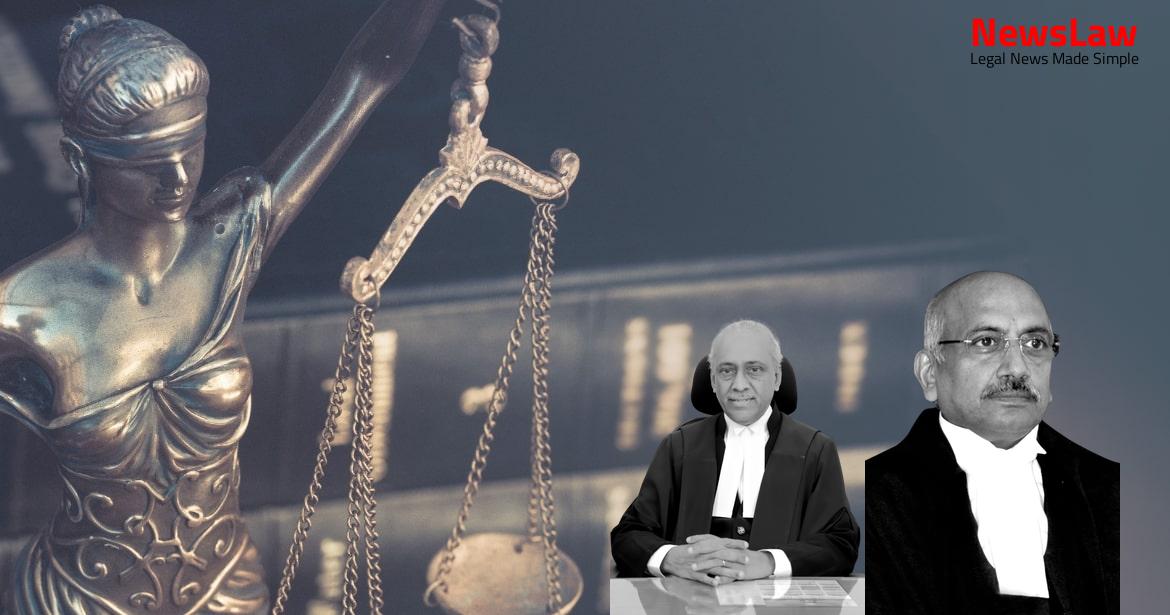In a significant legal development, the Supreme Court of India has delivered a decisive judgment in the Minimum Wages Dispute case. The case revolves around the dispute over minimum wages for workers employed in the Kuteshwar Limestone Mines. The judgment sets a precedent for upholding workers’ rights and interpreting the provisions of the Minimum Wages Act, 1948. Stay informed about this crucial legal ruling by reading our detailed summary.
Facts
- The Single Judge of the High Court initially allowed the writ petitions.
- The matter was remitted back to the High Court to decide based on the law in the Constitution Bench judgment in Steel Authority of India Ltd. and Others case.
Also Read: Judgment: Dispute Resolution in Infrastructure Contracts
Issue
- Workers filed claim applications under Minimum Wages Act, 1948 for the period after the prohibition notification dated 17 March 1993.
- No fresh agreements were executed between the appellant and contract labour during the interregnum period.
- Existing agreements were extended by competent authority and labour continued on the same terms till termination in April 1996.
- 2040 employees of Kuteshwar limestone mines filed claims in 1998 under Minimum Wages Act, 1948.
- Labout worked in SAIL establishment after prohibition notification.
- Claims relate to services rendered after prohibition notification till termination in April 1996.
Also Read: Dismissal Upheld in Disciplinary Proceedings of CISF Constable
Arguments
- The burden to prove that the contract labor was discharging the same and similar nature of duties as regular employees was on the respondents.
- The contract labor was not entitled to wages payable to employees directly employed by SAIL if the nature of work was not the same or similar.
- The tripartite agreement dated 12 November, 1991 between the contract laborers, contractor, and SAIL took care of Rule 25(2)(iv) & (v) of the CLRA Rules and each worker was paid Rs. 11.65 per day over the minimum wages notified.
- The applicant reported for work regularly from 17/3/1993 onwards, but was refused work after May 1996, even when reporting for duty.
- The applicant prayed for payment of wage differences, compensation, and condonation of any delays in filing the petition.
- The existing rates of wages of any employee as per agreement were protected if higher than the minimum notified rates, and the workmen were paid accordingly by the appellants.
- The State of Madhya Pradesh made amendments to the Minimum Wages Act, 1948 validating certain legislation.
- The contract laborers initially filed writ petitions for regularization and back wages, citing a previous judgment which was subsequently overruled by the Constitution Bench.
- The applicant claimed wages and benefits as a regular employee of SAIL based on various settlements and agreements governing the wages of SAIL employees.
- The Ministry of Labour revised the minimum rates of wages payable to workers employed in the mines following the 1991 notification.
- The respondents were not entitled to wages as per the NJCS memorandum applicable only to direct/regular employees of SAIL.
- Parallel proceedings initiated under the Minimum Wages Act, 1948 were considered unwarranted by the counsel for the appellants.
- The management refused to make payments as per the wage agreement to employees, despite multiple representations made by the applicant’s Union.
- The prescribed authority under the Minimum Wages Act decided the applications of the workmen without jurisdiction, as raised by the counsel.
- The principle of equal pay for equal work was not pleaded by the respondents, and the tripartite agreement dated 12 November, 1991 was complied with in terms of wage payments to the contract workers.
- The respondents argue that the amendment Act is only to validate fixation and does not apply to the dispute raised under the Minimum Wages Act, 1948.
- They rely on judgments such as Town Municipal Council, Athani Vs. The Presiding Officer, Labour Courts, Hubli and Others, BHEL Workers Association, Hardwar and Others Vs. Union of India and Others, and Hindustan Steel Works Construction Ltd. Vs. Commissioner of Labour and Ors.
- After the prohibition notification of 17 March 1993, contract laborers continued working in SAIL’s establishment, entitling them to wages notified by SAIL for regular employees from 17 March 1993 to April 1996.
- The respondents argue that the minimum wages of the regular employees in SAIL became the benchmark for contract laborers after the prohibition notification, as per clause (v) of the notification prescribing minimum wages dated 6 March 1990 and 12 July 1994.
- They claim that the issue of absorption and regularization was separate from the minimum wages issue, and the prescribed authority under the Minimum Wages Act had calculated arrears for the contract workers based on the regular employees’ wage rates.
- The respondents contend that once the contract of service agreement was terminated, the earlier contract workers should be treated as employees entitled to the same benefits, including wages, as the regular employees.
- They argue that having different wage structures for employees performing the same work was arbitrary and violated constitutional principles, and therefore, the regular employees’ wage structure was rightly extended to the former contract workers.
- The respondents point to settlements dated 6 March 1990 and 12 July 1994 to support their claim for the lowest rate of wages, which was calculated and confirmed by the prescribed authority and upheld by the High Court.
Also Read: Restitution Order in the Case of Temple Management: High Court vs. State
Analysis
- The jurisdiction of the Authority under Section 20(1) of the Minimum Wages Act is not for the enforcement of payment amounts but for ensuring compliance with rates fixed under the Act.
- Minimum wages under the Minimum Wages Act can be claimed independently and are subject to various considerations by committees while prescribing rates for different employee categories.
- An application under Section 20(1) was filed by the contract employees for parity with regular employees’ wages under the NJCS Memorandum of agreement.
- The CGLT allowed the claim petitions of the contract employees, but the Division Bench of the High Court held differently in 2006.
- The CLRA Act is a comprehensive code regulating employment of contract labor and provides for its abolition in certain circumstances.
- The statutory obligations and consequences under the CLRA Act require the employer to ensure payment of due wages to contract labor.
- The Payment of Wages Act and Industrial Disputes Act provide remedies if payment disputes arise beyond the scope of the Minimum Wages Act.
- Provisions of the NJCS Memorandum and CLRA Rules were considered in determining contract labor wages in relation to regular employees.
- Absence of dispute in rates between employer and employees means Section 20(1) of the Minimum Wages Act does not apply.
- The legal implications of automatic absorption of contract labor by principal employers following a prohibition notification were clarified by a Constitution Bench ruling.
- The Minimum Wages Act, 1948 was enacted to fix minimum rates of wages in certain employments.
- The Act’s long title and preamble emphasize the objective of setting minimum wages.
- The Act aims to ensure that workers are protected and treated fairly with regards to their wages.
- The Minimum Wages Act primarily focuses on fixing rates of minimum wages, overtime rates, and rates for payment of work on days of rest.
- The Act is not intended to enforce the payment of wages, which is the domain of other laws like the Payment of Wages Act and the Industrial Disputes Act.
- Section 20(1) of the Minimum Wages Act provides a forum for seeking remedy in cases of payment of less than minimum rates of wages or for work done on days of rest.
- The Act empowers the appropriate Government to fix the number of hours constituting a normal working day, provide for a day of rest in every seven-day period, and specify payment for work on a day of rest at overtime rates.
- Employers are required to pay employees working in excess of normal working hours at the overtime rate specified by the Act or by the appropriate Government.
- The alleged contract labors were not established as employees of SAIL
- They were not entitled to wages as per the agreement
- The agreement seems to be for regular employees of the management
- The contract laborers were not regular employees of the management
- These issues were decided against the Union and in favor of the management
Decision
- The order of the prescribed authority under the Minimum Wages Act, 1948 dated 2 December, 2003 and confirmed by the High Court on 11 December, 2006 is considered unsustainable.
- No costs are awarded in this judgment.
- Civil Appeal No 8334 of 2011 filed by the employees (Jaggu & Others) is dismissed.
- Civil Appeal No 8094 of 2011 filed by Steel Authority of India Ltd. is allowed, setting aside the order of the prescribed authority under the Payment of Wages Act, 1948.
- Judgment of the High Court is also set aside in this matter.
- Pending application(s), if any, are disposed of.
Case Title: STEEL AUTHORITY OF INDIA LTD. Vs. JAGGU .
Case Number: C.A. No.-008094-008094 / 2011



